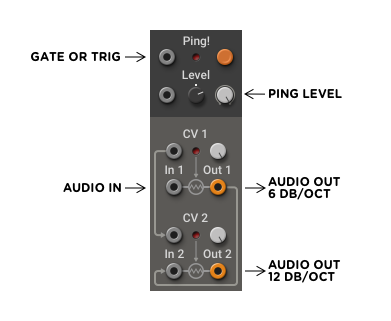If you weren’t already won over by AAS’ unique physical modeling components and refined interface, now the Multiphonics CV-1 adds essential historical filters to its palette.
There’s a live stream coming today, too, to tour some of this stuff:
Even in a crowded software modular market, the Multiphonics CV-1 is something special. Apart from coming from the company that produced the Tassman modular and has contributed over the years to various physically modeled instruments, the CV-1 is just uniquely focused. It doesn’t do everything. It doesn’t have an endless array of modules. Instead, it has a few really essential modules with polished designs and challenges you to patch what you want from those.
And believe me, I should know – I have to routinely flirt with the likes of Reaktor, VCV Rack, Cherry Audio modular, and others just to try to keep up. There’s something refreshing about some of the software modular that do less, but do it really well. (See also the Reason Studios Complex-1 west coast modular, also in that vein.)
So, good news here:
One, most of what AAS makes is now Apple Silicon native – including the CV-1. I’m right now running this on the M1 Mac mini, and it feels like I’m on a high-end workstation.
Two, now you get a wider range of filters to work with, which absolutely opens up what your patch can sound like.
At the center of that what makes you come back to the CV-1 over and over again is unquestionably the OBJEQ filter, the unique physically modeled tech that gives everything a material, resonant sound. It’s the same as AAS offers on its own in their AAS Objeq Delay plug-in (also worth a look – and there’s even an iOS app, too, so you can Objeq everywhere). And it is actually a load of fun working with OBJEQ in more “traditional” patches because it imbues your patching with distinctive and adventurous sounds.
But – pleasurable as that is, you might not want it in every patch, or as the filter in every part of every patch. So 1.1’s free update is a big deal – even just having a couple more filter flavors to choose from massively expands possibilities.
CV-1 already offered the State Variable Filter (SVF), probably known to most synthesists as the Steiner-Parker filter. (Arturia’s synths, like the MiniBrute, use this design, for instance.) The SVF covers a lot of other ground – you get low-pass, high-pass, and notch outputs (notch is labeled “band-stop”). AAS’ module has a delicious “growl” knob, and you can use both 12dB and 24dB/octave outputs.
Now you get two more:
Ladder to Heaven
The Ladder Filter is of course the famous Moog filter. Here, you get again a lot of additional controls – dedicated outputs for 6, 12, 18, and 24 dB/octave curves, a Drive control, FM, and just oodles of CV patching. The modeling here just sounds superb, and even for all the choices out there, this is exceptional in terms of amount of control it affords.
This video covers both the SVF and that new Ladder:
West Coast has the LPGs
The Low-Pass Gate is the signature filter-gate combination from the Buchla synths, and essential to its sound. But honestly, you don’t need the history – LPGs are just one of the best things since sliced bread, generally. They’re perfect for making slappy, sharp, percussive sounds and envelopes in a way that just seems natural and organic.
AAS’ implementation here is compact but versatile – and takes a lot of the best of the Buchla design. They’ve built in modeling again, so that the circuit emulates photoresistive opto-isolators. They even made each channel distinctive in character, as it would be on the real thing. You can use the channels separately for 6dB frequency response and longer decays, or get a shorter decay (and steeper 12 dB/octave frequency response) by running them in series.
They’ve also added a dedicated Ping trigger input – it’s right there inside the module, and you can use a gate or trigger to then “ping” the LPG.

It’s well worth reading the manual on this, as this single module is one in which you can spend a lot of time – and AAS did a great job documenting it:
https://www.applied-acoustics.com/multiphonics-cv-1/manual/lpg/
I really can’t wait to play with this one. I think it’s just what I need for a tough production / performance deadline next week. Just first I have to switch gears back to VCV Rack for teaching tomorrow. But expect more words from me on CV-1. If someone forced you to live on just this plug-in, you’d find tons to patch and explore.
US$99.
https://www.applied-acoustics.com/multiphonics-cv-1/